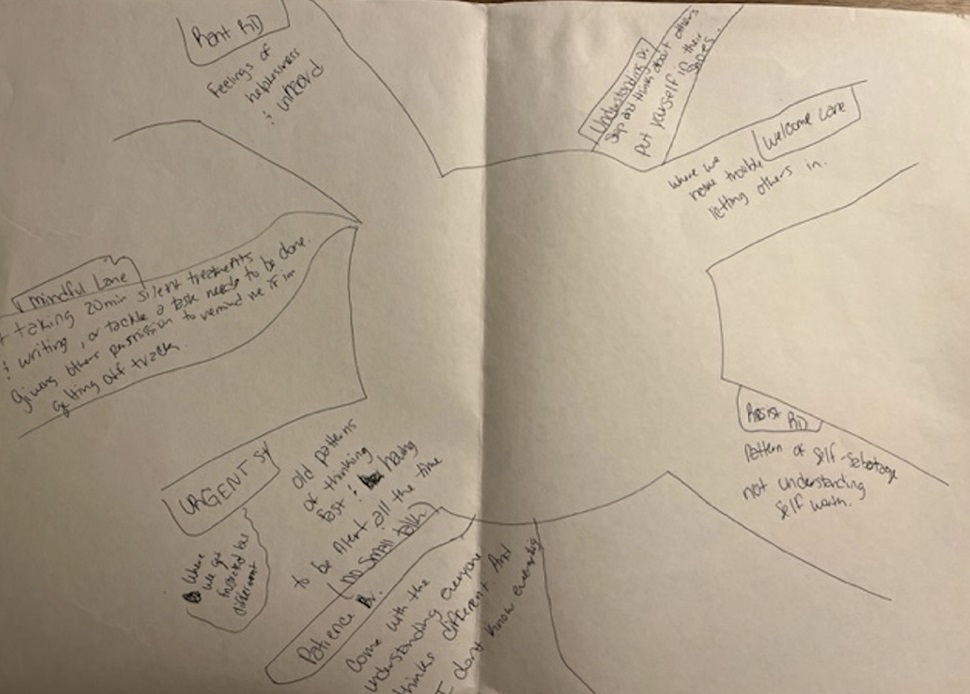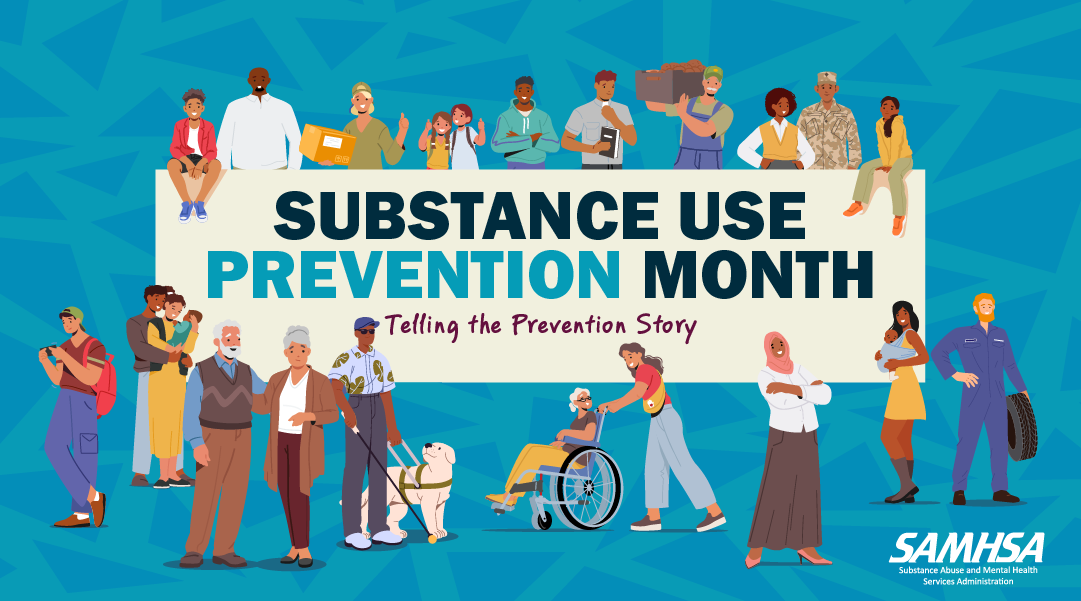The Road to Understanding
Guest Blog Post by Decca Knight, LPC
The integration of Ego State Therapy with Eye Movement Desensitization and Reprocessing (EMDR) offers a comprehensive approach to trauma treatment. By addressing different ego states or parts of an individual’s personality, Ego State Therapy addresses complex trauma and fragmented parts, promoting self-integration. While parts work can support EMDR’s Adaptive Information Processing (AIP) model, some clients struggle with understanding the organization of their internal parts. The “Road to Understanding” framework, developed by the author, Decca Knight, introduces a novel approach to mapping internal parts and patterns, facilitating safe exploration through the use of a road metaphor.
Ego State Therapy, stemming from the work of John G. Watkins and Helen H. Watkins, revolves around the concept of “parts” within the framework of ego states. Ego states represent distinct facets of an individual’s personality that are activated in response to specific stimuli. These states encompass emotions, behaviors, memories, and patterns associated with various aspects of a person’s identity. The goal of ego state therapy is to understand these various parts by exploring and resolving conflicts, trauma, and unresolved emotions, thereby achieving greater integration within their internal system (Watkins & Watkins, 1997).
Integrating principles from Ego State Therapy into EMDR yields a synergistic approach that enhances trauma reprocessing and encourages internal cooperation. Parts work can be integrated across various stages of the 8-phase EMDR model, tailored to meet the unique needs of each client. In Phase 1, therapists delve into the client’s internal experiences, traumatic memories, and potential patterns or parts while formulating therapeutic goals. Phase 2 focuses on stabilizing clients and establishing internal and external resources to support them throughout therapy. Parts work may involve strengthening the connection with adaptive parts and establishing a sense of safety within the internal system. During Phase 3, therapists explore the internal dynamics of the client’s personality, including relationships between different parts, negative cognitions, and triggers.
During Phase 4, therapists guide clients through bilateral stimulation (BLS) while focusing on the targeted memories and associated emotions. Parts work may involve addressing the presence of different parts that emerge during reprocessing, allowing clients to explore associations related to their trauma. Phase 5 entails reinforcing positive beliefs and emotions associated with adaptive parts, while Phase 6 involves exploring physical sensations and emotions arising from trauma reprocessing. Phase 7 aims at grounding parts and containing residual distress, with Phase 8 assessing progress and identifying remaining reprocessing targets.
Mapping out parts through Ego State Therapy involves conceptual representations of various aspects of an individual’s internal landscape. Some clients can easily recognize parts or patterns in themselves; however, clients who are more concrete thinkers or who struggle with dissociation may have difficulty paying attention to their internal dialogue. In addition, the stigma attached to personalities or dissociation may be very unnerving in many cultures and belief systems. The “Road to Understanding” framework bridges this gap by encouraging clients to conceptualize identified patterns as roads in their thought processes.
 Often, clients engage in patterns without conscious thought. In the “Road to Understanding” approach, the clinician encourages clients to conceptualize identified patterns as roads in their thought processes. During phases 1-3 of EMDR, the therapist and client can explore their patterns and parts through illustrations of such roads. A road can be given a name, have a “speed limit” (how quickly they revert to patterns or parts), and include descriptions of associated emotions, sensations, and behaviors. The road can include memories, the year it was built, be smooth, mountainous, etc. A client can imagine traveling down the road at a high speed in a car and notice their sensations and associated parts. The earliest memory associated with various highways can also be a target for EMDR reprocessing.
Often, clients engage in patterns without conscious thought. In the “Road to Understanding” approach, the clinician encourages clients to conceptualize identified patterns as roads in their thought processes. During phases 1-3 of EMDR, the therapist and client can explore their patterns and parts through illustrations of such roads. A road can be given a name, have a “speed limit” (how quickly they revert to patterns or parts), and include descriptions of associated emotions, sensations, and behaviors. The road can include memories, the year it was built, be smooth, mountainous, etc. A client can imagine traveling down the road at a high speed in a car and notice their sensations and associated parts. The earliest memory associated with various highways can also be a target for EMDR reprocessing.
Clients often have many parts and roads and can illustrate how they are related. A client may draw the roads in parallel or intersecting one another. The roads may be neatly organized or more chaotic. The “Road to Understanding” concept also helps clients mindfully slow down and use resources developed during phase 2 of EMDR. Slower roads, such as country roads, can be added to the visual as representations of new ways of being. These slower roads can have different names and slower “speed limits,” and resourcing.
Once EMDR reprocessing begins on target memories in phase 4, the “Road to Understanding” drawing can be referenced through interweaves. As BLS assists in desensitizing memories, the road analogy can help parts integrate the processed material. As integration occurs, the client can visualize moving down slower roads. In phases 5-8, therapists can guide clients in integrating the processed material through the installation of positive beliefs and the facilitation of communication between parts.
Diane, a client in her late 50s with Complex PTSD, had a difficult time looking inward. She had gaps of memory during her childhood that were coupled with traumatic events. Daine had been labeled as “crazy” and carried significant fear that something inside her was broken. Though she struggled with looking inward, she could identify external patterns in her life comfortably. The clinician, therefore, asked Diane to explore her patterns through a road metaphor.
When asked to illustrate her roads, Diane drew four main highways connected to a roundabout (see illustration 1). The names of her roads reflected her parts and were labeled “Rant, Urgent, Resist, and Welcome.” Diane described her patterns/parts on each highway. For instance, on “Rant” Rd., she often felt helpless and unheard. On “Resist” Rd., she couldn’t connect with her self-worth and tended to self-sabotage. She described how triggers caused her to pick different roads. When she felt like others were wasting her time, she switched to “Urgent” Rd. She described how, as a child, she constantly had to be alert for danger. This hypervigilance caused her to disdain “useless conversation.” In reflecting on these patterns, she could identify the time frames they developed and associated memories that became targets for EMDR reprocessing.

Illustration 1: Drawing of Diane’s Highway system (The client gave permission to use her drawing for educational purposes. Some identifying features were changed).
Diane often described “driving without awareness” and sometimes not knowing why she was on one road. This pattern was better understood by the client when the association of driving aimlessly was used. Through this exploration, she was able to understand why some patterns may have led to her loss of memory. When exploring what she would like to change, Diane began to explore different, slower paths. “Rant” Rd. became “Mindful” Ln., where she could take time to slow down, and “Urgent” St. became “Patient” Dr., in which she could reflect on how others thought differently. As Diane began to pay attention to roads in her day-to-day life, she was able to increase her awareness of her inner system and parts.
During one session, Diane described a recent incident at a community event. During this event, she felt that another attendee disparaged her, and she suddenly felt a rush of anxiety. This rush of emotion pushed her to abandon the event, and she found herself moving quickly to her car. Once outside, she was able to notice that she was speeding down her “Rant” Rd. She then took some time to breathe and reflect, assuring her younger part that it was safe, and shifted to “Mindful” Ln. Diane was then able to return to the event and re-engage with others.
As the discussion of her various highways progressed throughout treatment, Diane discovered that her adult self was in the middle of the roundabout. She noticed that when she was able to take slower roads, she was able to be centered around her ideal self. Her feelings of “driving aimlessly” were lessened, and she could experience more mindful presence rather than dissociation.
The internal insights gained through the “Road to Awareness” approach enabled Diane to engage her parts in the EMDR process. Her heightened awareness of patterns and parts empowered her to explore the feelings, thoughts, and behaviors linked to traumatic memories in Phase 1 while establishing a foundation of safety and containment in Phase 2. Utilizing her highways, Diane pinpointed memories and associated cognitions during Phase 3. The cultivation of slower pathways and a deeper connection with her adult self enhanced her reprocessing and self-awareness during Phases 4-7. Finally, in Phase 8, she was able to navigate other roads to access memories still awaiting reprocessing.
The integration of ego state and parts work into EMDR expands the scope of trauma therapy, offering a more comprehensive and nuanced approach to healing for those with parts. Many clients, however, struggle to conceptualize the internal framework or may have various fears around the language of parts. The “Road to Understanding” framework can help individuals explore this internal landscape in a non-threatening, easily relatable visual. This system of roads can then be used throughout the eight-phase AIP model to ground and re-center the work of reprocessing target memories.
Decca Knight is an LPC and EMDR Certified Therapist™. She has worked for 20 years in the school system, private practice, non-profits, and as a consultant to various organizations. Decca owns Blue Ridge Parenting, co-owns Connected Community Consulting, and is the founder of Standing for Equity in the Roanoke Valley.
References
Watkins, J. G., & Watkins, H. H. (1997). Ego States: Theory and Therapy. W. W. Norton & Company.
Back to Focal Point Blog Homepage
Additional Resources
If you are a therapist interested in the EMDR training:
- Learn more about EMDR at the EMDRIA Library
- Learn more about EMDR Training
- Search for an EMDR Training Provider
- Check out our EMDR Training FAQ
If you are EMDR trained:
- Check out EMDRIA’s Let’s Talk EMDR Podcast
- Check out the EMDRIA blog, Focal Point
- Learn more about EMDRIA membership
- Search for Continuing Education opportunities
If you are an EMDRIA Member:
Date
May 3, 2024
Contributor(s)
Decca Knight
Practice & Methods
Parts Work, Your EMDR Practice





